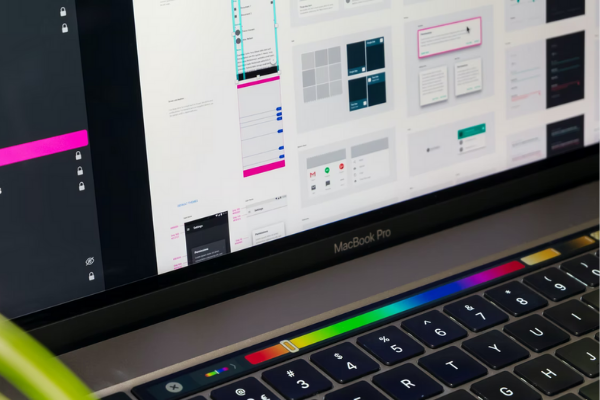Web designing has revolutionized how users consume content online. Websites have come a long way from the ones which only had texts. Today, if a website owner wants to attract maximum attention, they need to focus not only on stunning visuals but on creating a better user experience.
\The web design domain has expanded and evolved in the past three decades. And during this time, web designers have learned many lessons that they consider essential. In 2020, the online war for maximum visibility is getting tougher. It's because more brands from all industry verticals are capitalizing on their online presence. A few web design practices and lessons might prove beneficial to web designers.
Crucial web design lessons in 2020
1. Know how to adapt
The growth and change of web design are a continual process! Do you want your website to gain maximum visibility? If yes, then you should learn to adapt to most changes that come with web design. Today, the use of mobile devices has made most web designers make every website mobile responsive. For starters, make sure that the site display is correct across desktops, tablets, and smartphones.
2. Never follow the web design trends without analyzing it
A website design trend, such as video content, is meant to stay for a while! However, some trends come and go fast. So, before implementing the same, assess its gravity and relevance. If it's a trend that you can do without, it's best not to get too engrossed about it. On the other hand, if it's a trend that includes changes centering around let’s say a major Google updates, it's best to stick to the same.
3. Say “Yes” and “No” to clients when needed
Web designers try and incorporate all the client requirements to their best capacity. But there are times when web designers need to suggest the best strategy based on their expertise and years of experience. For instance, few clients think that adding extra details and their offers in a bold, visible way will make them gain profit. The truth is that it might make the website look cluttered, crampy, and untidy. Most online users today prefer clean and minimally designed websites that provide the necessary information and offers. It helps in smooth navigation and pleasant user experience.
Web designers should use their know-how for the benefit of the website they’re designing. And sometimes, that will involve not agreeing with the client and telling a “No” to a few of their requirements. It’s always a smart call to get into a discussion to address any difference in aesthetic and web design approaches. That way, you can explain what you intend for the website and how it will be beneficial in the long-run.
Most leading companies and brands want to join hands with smart and expert web designers or web designing companies. Stating what you think is correct for the website will add to your convincing power and help you in future business dealings.
4. Make sure that the service rate justifies your service
Have you been into web designing for a long time? If yes, chances are you’ve become excellent at your job after several assignments and years of experience. Hence, it’s essential to claim the correct price for your effort and service. You shouldn’t charge any less and bargain for the best service charge. You need to charge the amount that you think justifies the effort you've put in designing the website. Negotiation with clients is always the best way to understand better about price adjustment and the services that get expected from you.
5. Keep your business portfolio updated
More companies across multiple industry verticals are here to maximize their web presence. It means they might search for an expert web designer anytime online. If you want to bag some of the best clients, you need to keep your online business portfolio updated. When a potential client asks for your details, you can share the online updated portfolio. It will have all the required information, and it looks professional as well.
6. Being only a web designer isn’t enough
There are web designers who have the technical know-how. Hence, it is necessary to think about all that you can provide to the clients that will enable you to stand out. When you provide a value-added service, it is an advantage. Apart from having the expertise of a trained web designer, you also need to have a basic idea about project management, have the required problem-solving and communication skills. All of these should result in positive outcomes.
Once you devote time to these lessons, you will grow as a web designer. If you own a web designing company, you will bag more clients and be able to service them better. It will help you to attract word of mouth publicity for your website.
A few essential web design trends for 2020
Saying yes to the web design lessons is incomplete if you don’t add in the crucial and necessary web designing trends. Some of the critical trends for 2020 and even beyond that include:
1. Hyper-personalization
The moment the customer journeys are diverse, the increasing touch points provide meaningfully perspectives about the target audience. Web designers mostly have the buyer persona’s drawn up.
And along with that, there's ample behavioral information that suggests what the specific users demand from a brand. Each online user comes with their distinctive requirements. Also, 80% of the shoppers are keen to purchase from an online brand that provides customized experience.
Additionally, with machine learning and AI becoming popular, the online marketers and web designers can create a hyper-personalized experience, which caters to the individual users, instead of the buyer personas. The product and service recommendations that few brands provide on their website helps to identify customer preferences.
2. The micro-interactions
Simply put, the micro-interactions are UI animations that communicate the actions to the users. It helps in generating an immersive experience for the user. One of the best examples of this is the emoji and likes used in social networking websites. You could take the percentage bar that appears when you are uploading a file.
On-screen navigation is essential as it offers relevant contextual hints about the way your website functions. The micro-interactions are all about taking this concept a step ahead by maximizing the visual feedback. It helps to generate an interactive experience which results in better engagement. For social media sites, it is crucial for maximizing likes. Simultaneously, it is also a potent process for guiding the users to some of the most relevant sections of the website.
3. The dark modes
The dark modes are becoming a popular trend and are popping up almost everywhere. It is necessary to know that dark models don't just come for obvious perks. Some of the essential design principles for dark modes are:
- The dark screen minimizes glare, blue light, and flickering.
- Dark modes are energy-effective, especially on the AMOLED and OLED displays.
- The text on the dark background minimizes eye-strain in the low-light conditions.
Also, the dark modes got designed for users who use Smartphones for the most part of the day. A few years back, if you put text on any black backdrop, it would have been unacceptable and mocked about. However, today it has become a pertinent web design trend, as most users browse their mobiles and another website throughout the night.
4. There are chances of accessibility becoming mainstream
Web designing comes with the accessibility clause. However, there are a few famous brands that are losing their consumers and audiences because of improper accessibility. Hence, it has become essential for websites to be accessible. The recent version of the regulation is called Public Sector Bodies in the UK. (Websites and Mobile Applications) (No. 2) Accessibility Regulations 2018. According to the rules, the websites that got created after or on 23rd September 2018 had to get compliant by 23rd September 2019. Also, the websites which got developed much before should become a complaint by 23rd September 2020. Also, all the mobile apps need to be compliant as well by 23rd June 2021.
5. Avoid the design fads
From infinite scrolling and parallax to browser-stalling animations and video backgrounds, you have several design trends that shouldn't have caught on. Even in 2020, the same gets slated to take place. There are ample discussions about 3D animations. It might sound technologically advanced and cutting edge, but there's a catch. Here the internet connection needs to have a high speed, and the web browsers should perform excellently. According to some web designers, the practical execution of 3D animations is tricky and non-existent. Hence, it is essential to concentrate on web design trends that add value to users. And these are the changes or trends that will stay many more than superficial or unnecessary trends.
These are some essential pointers you need to keep in mind so that you can cater to the user requirements for your web design projects.
**This post is written by our guest author Jack Dsouja. An experienced writer and editor with a decade's experience in the industry, he enjoys mentoring young and upcoming writers. Find more about him SEO, Social Media Marketing, and UI/UX at BigDropInc.
Interested to write for us? Drop a mail at guestpost@srijan.net with your awesome ideas
Our Services
Customer Experience Management
- Content Management
- Marketing Automation
- Mobile Application Development
- Drupal Support and Maintanence
Enterprise Modernization, Platforms & Cloud
- Modernization Strategy
- API Management & Developer Portals
- Hybrid Cloud & Cloud Native Platforms
- Site Reliability Engineering




